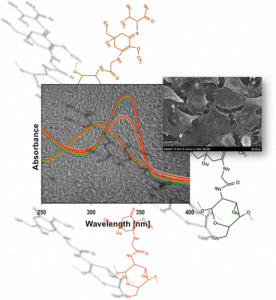For consumers searching for just the right sunblock this summer, the options can be overwhelming. But scientists are now turning to the natural sunscreen of algae — which is also found in fish slime — to make a novel kind of shield against the sun’s rays that could protect not only people, but also textiles and outdoor materials. They report on their development in the journal ACS Applied Materials & Interfaces.
Existing sunblock lotions typically work by either absorbing ultraviolet rays or physically blocking them. A variety of synthetic and natural compounds can accomplish this. But most commercial options have limited efficiency, pose risks to the environment and human health or are not stable. To address these shortcomings, Vincent Bulone, Susana C. M. Fernandes and colleagues looked to nature for inspiration.
The researchers used algae’s natural sunscreen molecules, which can also be found in reef fish mucus and microorganisms, and combined them with chitosan, a biopolymer from crustacean shells. Testing showed their materials were biocompatible, stood up well in heat and light, and absorbed both ultraviolet A and ultraviolet B radiation with high efficiency.
The authors acknowledge funding from the European Commission Marie Curie Intra-European Fellowship, the KTH Advanced Carbohydrate Materials Consortium (CarboMat), the Swedish Research Council for Environment, Agricultural Sciences and Spatial Planning (FORMAS) and the Basque Government Department of Education
